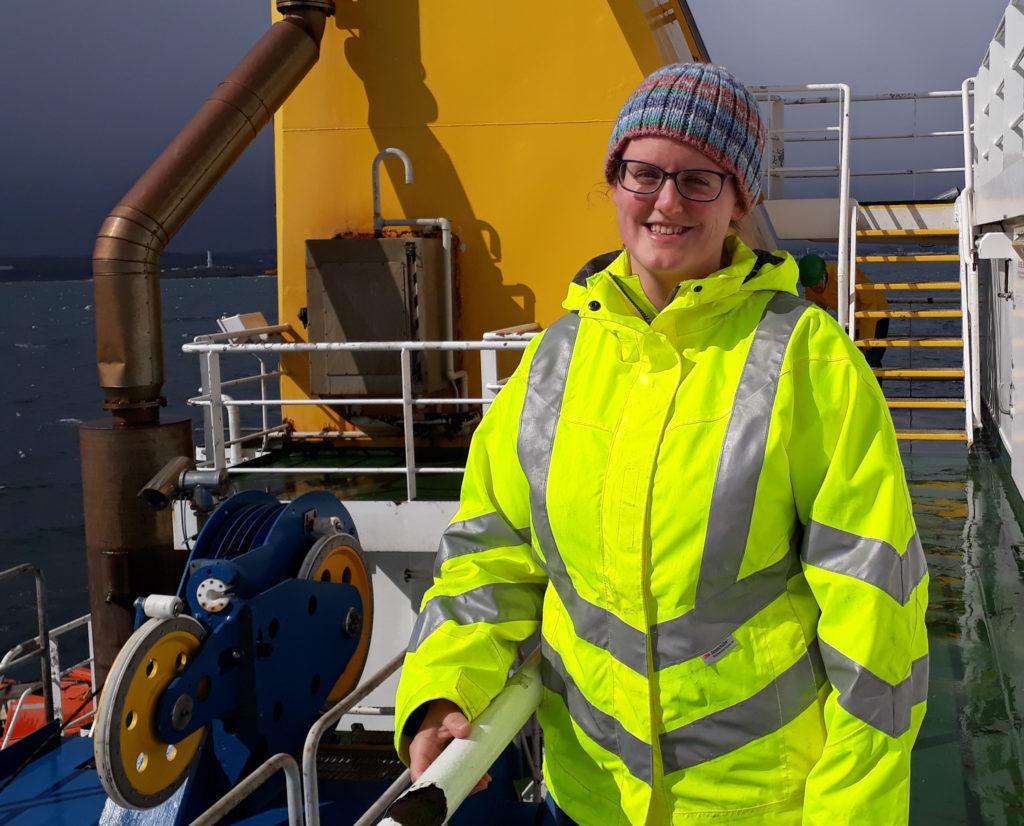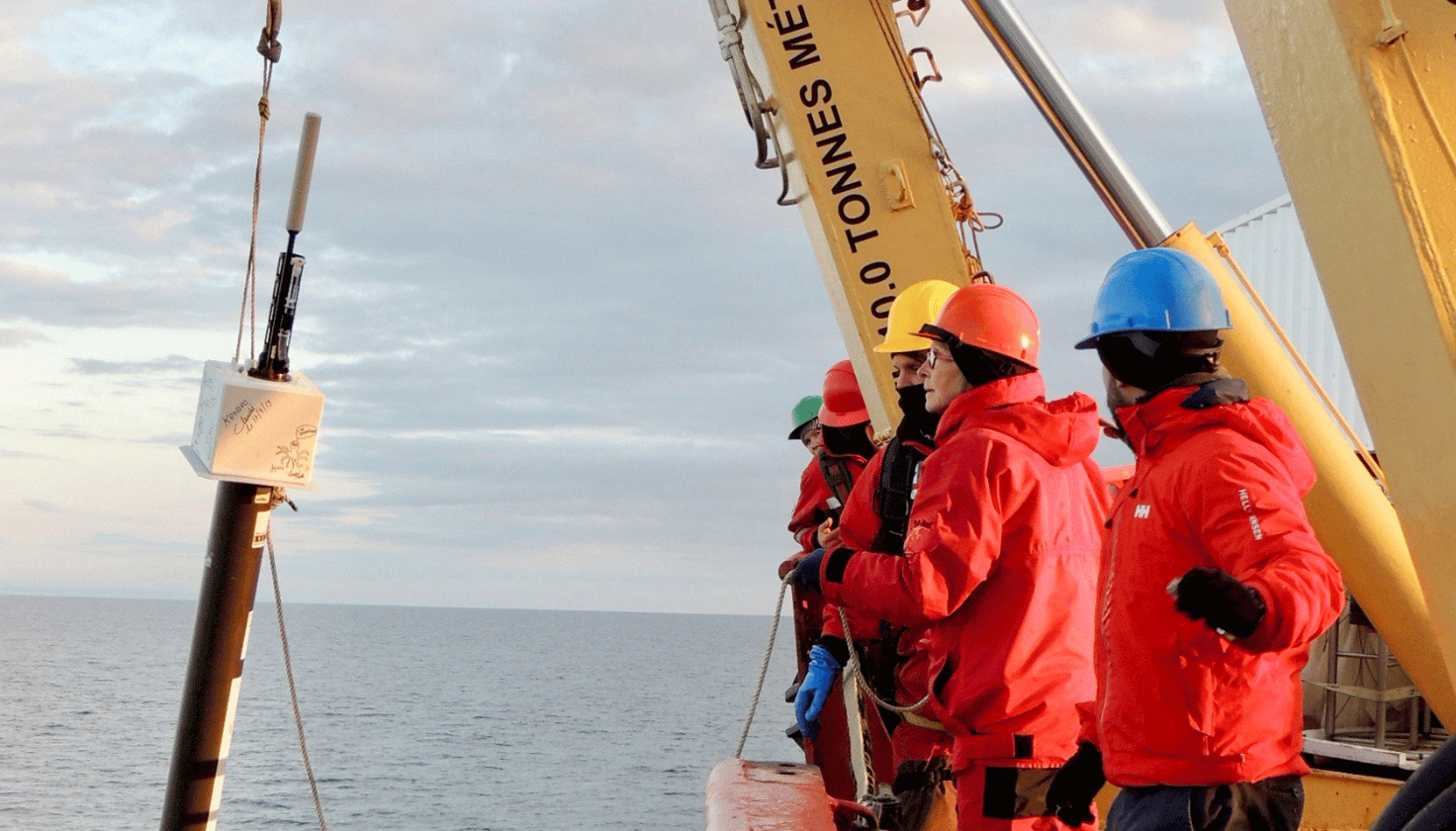New scientific article by GEORGE partner National Oceanography Centre (NOC) presents new developments in Total Alkalinity (TA) measurements. The authors have developed a submersible sensor for autonomous direct (in situ) measurements in full ocean depths. Direct measurements are critical for understanding the ocean’s role in the carbon cycle and for evaluating emerging marine carbon dioxide removal strategies.
Total alkalinity (TA) is a parameter that helps scientists understand ocean chemistry, particularly how the ocean absorbs and stores carbon. High-quality TA measurements can improve understanding of the ocean’s carbon cycle, which is closely linked to climate change and marine ecosystem health.
Currently, very few autonomous technologies exist for measuring TA directly in the ocean, and none have been tested below 2 metres depth in real-world conditions. To address this gap, the authors have developed a submersible sensor designed to take autonomous TA measurements all the way down to the deepest parts of the ocean. This innovation, funded in part by the GEORGE project, is described in detail in the article Autonomous Sensor for In Situ Measurements of Total Alkalinity in the Ocean, published in ACS Sensors in February 2025.
New sensor analyses seawater and calibrates autonomously
Although laboratory methods can accurately measure seawater TA, there are currently no commercially available in situ sensors that fully meet the requirements for ocean monitoring—such as withstanding high pressure, operating autonomously, and delivering precise results.
To meet this challenge, the authors introduce a new TA sensor that uses lab-on-a-chip technology to analyse seawater, performing a precise chemical test with optical detection. Lab-on-a-chip refers to a device that integrates one or several laboratory functions in a single integrated circuit. The sensor also carries multiple calibration materials, allowing it to self-check and ensure reliable measurements over time.
The new sensor has undergone rigorous testing in the laboratory and in a high-pressure facility simulating ocean depths of up to 6 km. It has also been deployed in real-world conditions, including a shallow estuary, on an underwater lander at 120 metres depth, and on an autonomous underwater vehicle.
“These deployments took place over a few years and they allowed us to evaluate the technology’s performance in a range of environments which represented different typical use cases. Platforms included seabed landers, moorings and Autosub Long Range autonomous underwater vehicles (AUVs). This enabled us to identify necessary improvements to the technology which are now being implemented within GEORGE”, says lead author Dr Allison Schaap, Principal Research Engineer in the Ocean Technology & Engineering Group at NOC and lead technology developer of the TA sensor in GEORGE.

Direct measurements vital for assessing carbon removal strategies
Improved monitoring of total alkalinity would lead to a better understanding of both natural and human-led processes in the ocean. One such process is ocean alkalinity enhancement (OAE), a marine carbon dioxide removal approach that involves adding alkaline substances to seawater to increase the ocean’s natural carbon sink.
The newly developed sensor could help address the significant monitoring gap related to OAE strategies and improve assessments of its effectiveness. “Autonomous TA sensors will be a key part of monitoring, reporting, and verifying OAE, helping to establish its effectiveness for carbon accounting and determining the efficiency needed to scale up operations”, the authors write.
Next, the NOC team will focus on further improving the sensor. The upcoming deployments in the GEORGE project will provide valuable opportunities for testing.
“We have used the knowledge we gained from this work to design a new version of the sensor, which is being tested and deployed through the GEORGE project. The sensor is not commercially available yet but we anticipate pursuing this to enable wider access to the technology”, Dr Schaap describes.
Autonomous Sensor for In Situ Measurements of Total Alkalinity in the Ocean
Allison Schaap, Stathys Papadimitriou, Edward Mawji, John Walk, Emily Hammermeister, Matthew Mowlem, and Socratis Loucaides
ACS Sensors 2025 10 (2), 795-803
DOI: 10.1021/acssensors.4c02349


